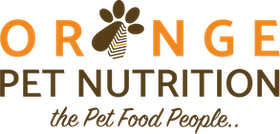Birds, whether kept as pets or found in the wild, are cherished creatures admired for their beauty, behaviour and their sounds. However, like any living beings, birds are susceptible to diseases that can affect their health and well-being.
Preventive measures are essential to keep our avian friends happy and healthy. In this article, we'll explore some common bird diseases and provide preventive measures to protect our feathered beings.
Avian Influenza (Bird Flu)
Avian influenza, commonly known as bird flu, can affect various species of birds, including domestic poultry, parrots, finches, toucans, etc. It can be transmitted to humans in rare cases, making prevention crucial.

Preventive Measures:
- Isolate new birds for at least 30 days before introducing them to any existing birds at your home.
- Practice strict hygiene measures, such as disinfecting their cages.
- Avoid contact with outer birds, as they can carry the virus.
Psittacosis (Parrot Fever)
Psittacosis is a bacterial infection that primarily affects parrots but can also affect other bird species. It can be transmitted to humans through bird droppings and respiratory secretions.

Preventive Measures:
- Regularly clean and disinfect cages, perches, and toys.
- Wash your hands thoroughly after handling your birds or cleaning their enclosures.
- Quarantine new birds before introducing them to your existing birds.
Aspergillosis
Aspergillosis is a fungal infection that affects the respiratory system of birds, particularly those with weakened immune systems. It can be found in contaminated food, water, or bedding.

Preventive Measures:
- Keep bird enclosures clean and dry to prevent fungal growth.
- Provide proper ventilation to reduce moisture levels.
- Store bird food and bedding in a dry, cool place.
Beak and Feather Disease (PBFD)

PBFD is a viral disease that affects the beak, feathers, and immune system of birds. It can lead to feather loss, deformed beaks, and even death.
Preventive Measures:
- Avoid overcrowding in aviaries to reduce stress and the risk of disease spread.
- Isolate infected birds and consult a veterinarian for treatment.
- Practice strict hygiene when handling infected birds or their belongings.
Candidiasis (Thrush)

Candidiasis is a fungal infection caused by the Candida yeast. It can affect the digestive system, crop, and throat of birds, leading to weight loss and discomfort.
Preventive Measures:
- Maintain a clean and hygienic feeding area.
- Ensure that food and water containers are regularly cleaned and disinfected.
- Provide a balanced diet to support a strong immune system.
Protecting our birds from common diseases is essential for their overall health and longevity. By implementing preventive measures such as quarantine, proper hygiene, and regular health check-ups with a veterinarian, bird owners can ensure the well-being of their avian companions.
Additionally, bird enthusiasts who encounter wild birds can contribute to their health by refraining from feeding or handling them to prevent disease transmission. By following these guidelines, we can create a safer and healthier environment for all our winged beings, whether they are pets or part of our natural ecosystem.




